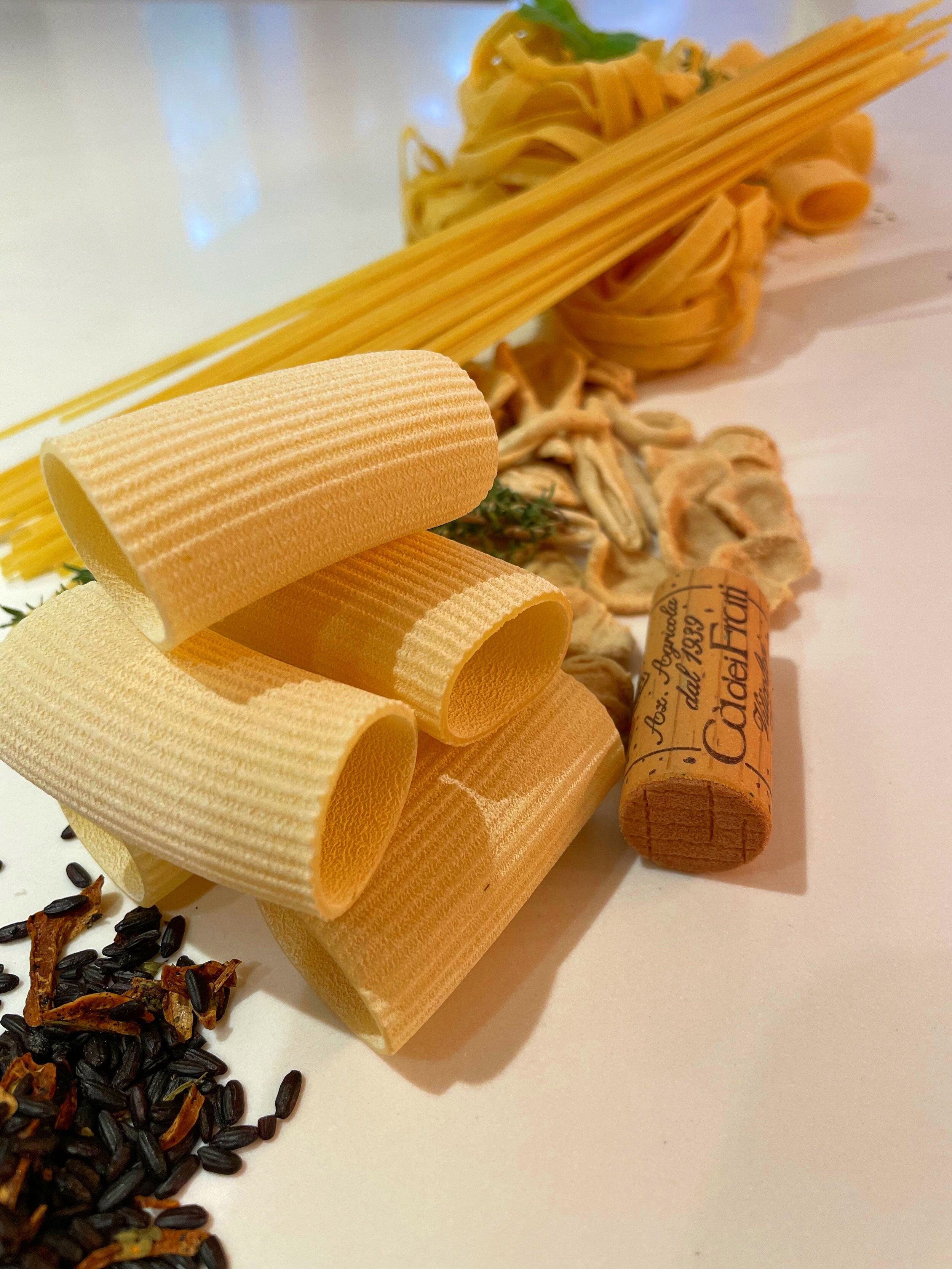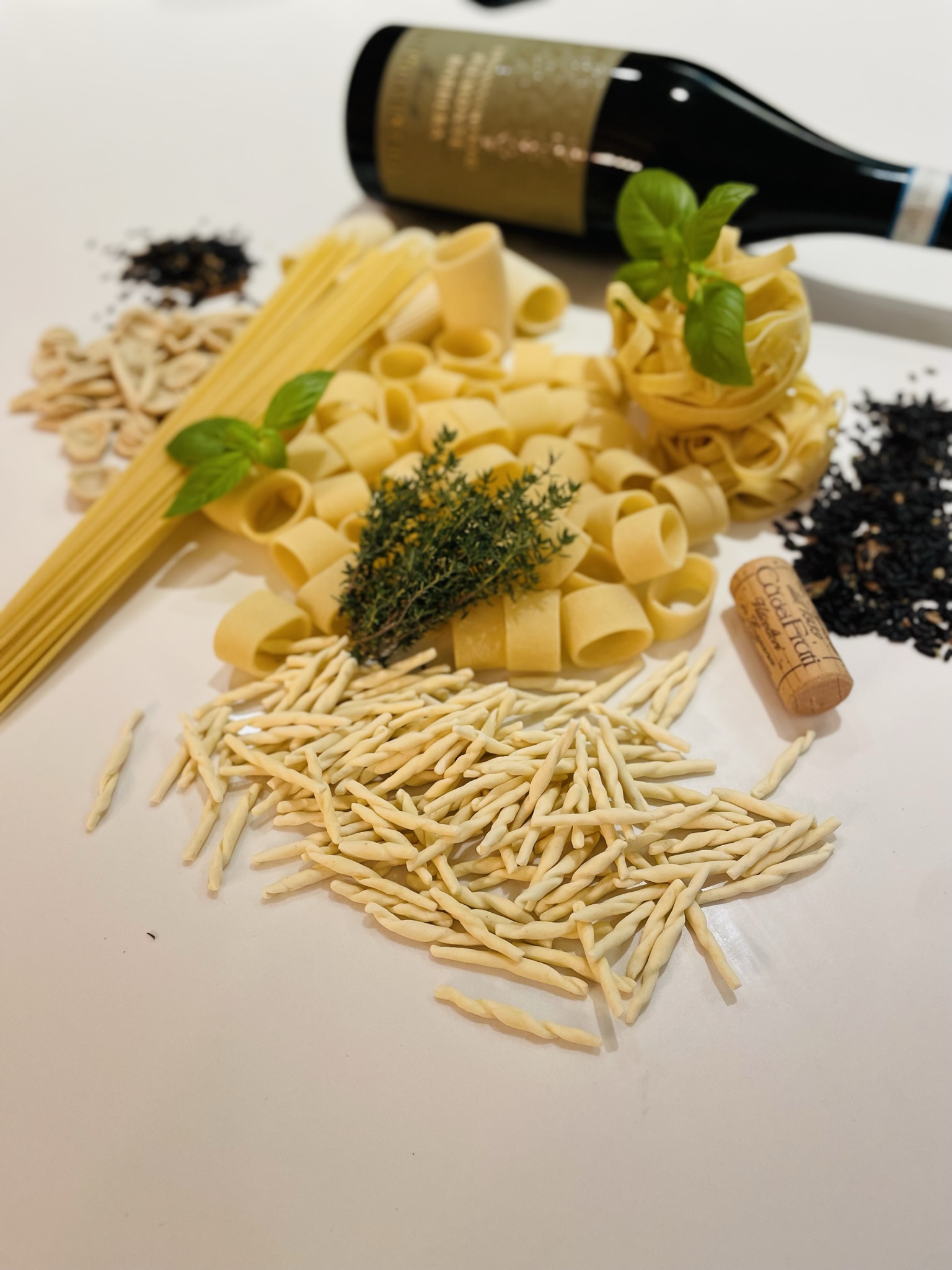The eternal battle: Dry vs. Fresh Pasta
Pasta, the beloved dish of Italian cuisine, is a favorite worldwide. But when we choose pasta for our meals, we are often faced with the choice between dry and fresh pasta. What are the differences between these two? And which one is the best choice for your culinary adventures? Let's take a closer look at the flavorful battle between dry and fresh pasta.

Dry pasta: The classic choice
Dry pasta is undoubtedly the most well-known and widely available variant. It is made from durum wheat semolina mixed with water and sometimes eggs. This mix is then processed into the desired shape, dried and packaged for sale. Dry pasta has some benefits that make it a popular choice:
Shelf life: Dry pasta has a long shelf life, making it a handy pantry favorite.
Variety: There is an abundance of shapes and sizes, giving you endless possibilities to prepare different dishes.
Easy preparation: Dry pasta cooks quickly, usually in 8-12 minutes, depending on its thickness.

Fresh pasta: The delicacy from Italy
Fresh pasta is made from simple ingredients – flour and eggs. It is made by hand or using pasta machines and has a shorter shelf life than dry pasta. Here are some reasons why many prefer fresh pasta:
Taste: Fresh pasta has a richer, more complex flavor than dry pasta. It has a subtle egg flavor that absorbs the sauce better.
Texture: Fresh pasta is often softer and has a delicate texture that melts in your mouth.
Craftsmanship: The process of making fresh pasta is often considered an art form in itself, making it a pleasure to make at home.
Adaptability: Fresh pasta can be more easily adapted to specific flavors and culinary creations. This way you can fill fresh pasta with the most beautiful fillings by turning it into ravioli or cannelloni.
The choice depends on the dish
It is important to note that the choice between dry and fresh pasta often depends on the specific dish you want to prepare. Dry pasta works well with thicker sauces such as bolognese, while fresh pasta is ideal for lighter, creamy sauces.
If you are short on time and want to put a quick meal on the table, dry pasta is the most practical choice. On the other hand, if you have the time and want to create a gastronomic masterpiece, consider fresh pasta for a unique taste and texture.
Conclusion
The battle between dry and fresh pasta is a matter of personal preference and the dish you want to make. Both have their own charm and advantages. Most importantly, pasta is always a tasty and satisfying choice, regardless of its shape or texture.
So, whether you opt for the classic dry pasta or take an adventurous dive into the world of fresh pasta, enjoy the process and the explosion of flavor that this Italian favorite offers. Buon appetito!



